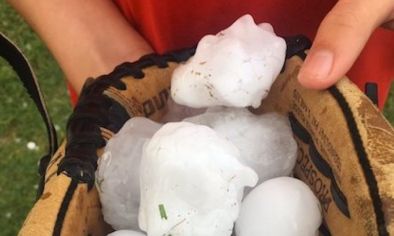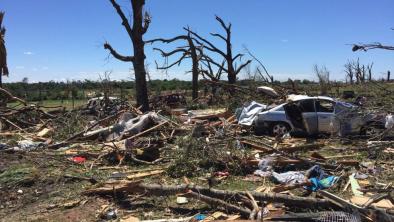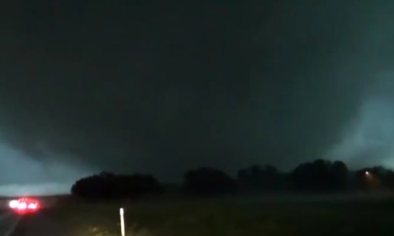ENSO and tornadoes

ENSO shifts the atmospheric circulation (notably, the jet stream) in ways that affect winter temperature and precipitation over the U.S. The changes in spring (March – May) are similar to those during winter, but somewhat weaker.
These shifts would also be expected to impact thunderstorm activity: El Niño tends to shift the jet stream farther south over the U.S., which blocks moisture from the Gulf of Mexico, reducing the fuel for thunderstorms. On the other hand, La Niña is associated with a more wavy and northward shifted jet stream, which might be expected to enhance severe weather activity in the south and southeast. Indeed, historic tornado outbreaks in 1974, 2008 and 2011 started during La Niña conditions.
However, tornado and severe weather activity is more variable (“noisier” and harder to predict) than ordinary weather (think temperature and precipitation), and any ENSO signal is harder to see.
...
Two important ingredients for tornadoes are atmospheric instability (e.g., warm, moist air near the surface and cool dry air aloft) and vertical wind shear (winds at different altitudes blowing in different directions or speeds). Measures of these tornado-friendly ingredients can be combined into indexes that are less noisy than actual tornado reports and let us see how the phases of ENSO make the environment more or less favorable for severe weather.
In much of the U.S., La Niña conditions are associated with increases in these environmental factors and in tornado and hail reports. The largest signal is present in the south and southeast (including parts of Texas, Oklahoma, Kansas, Louisiana, Arkansas, and Missouri), except in Florida where the opposite relation is observed. Positive values indicate increased activity, and negative values indicate decreased activity compared to the long-term average (1979-2015).
In the South and Southeast, where the signal is strongest, we see a clear shift in activity with ENSO phase, but with a tremendous range of variability, meaning some El Niño years still have high severe weather activity, and some La Niña years are relatively inactive. While increased tornado activity is generally associated with La Nina conditions, blaming this year’s high activity on the weak La Nina conditions would be exaggerating the strength of the historical relationship.

Regional (100-90W, 31-36N) totals of March-May tornado reports, hail events, a tornado environment index (TEI) and a hail environment index (HEI) expressed as percentage of their 1979-2015 average and conditioned on the ONI. Box edges mark the 25th and 75th percentiles, and whiskers extend 1 and a half times the interquartile range. Figure by climate.gov; data from the authors.
...
However, there is tremendous variability in severe thunderstorm activity that is unexplained by ENSO.
Related Content






